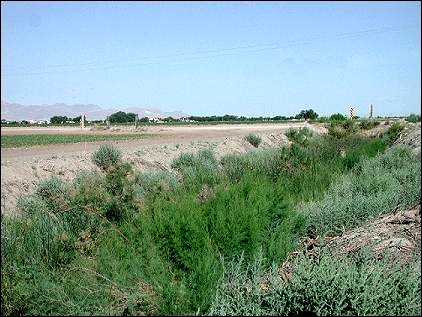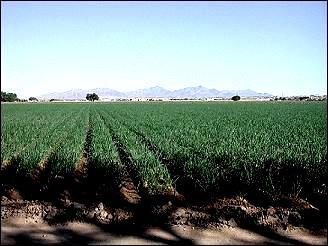

What man has taken away, he returns—sometimes! The lush vegetation on the floodplain of the Rio Grande of the past provided food and shelter for innumerable kinds of animals—mammals, birds, insects, and more. As man cleared fields for crops and cut the natural cycle of renewal by preventing frequent floods, habitats for many life forms were destroyed. Croplands all too frequently consisted of monocultures, row after row of cotton or corn or onions and nothing else, providing little shelter and supplying food mostly for agricultural pests.
Yet, some small part of what was taken away was replaced. Ornamental
plantings around homes provided shelter and, sometimes, food. Irrigation brought water
to areas far from the river proper, and drainage ditches, sunk below the level of the
land, gave shade, well-watered habitats, and shelter from fierce winds. Though in some
sense artificial and too often invaded by exotic plants from elsewhere, nevertheless
many local animals have adapted to these new conditions. And, life being short, most
have never known different.

Listen to the Audio (mp3 format) as recorded by KTEP, Public Radio for the Southwest.
Contributor: Arthur H. Harris, Laboratory for Environmental Biology, Centennial Museum, University of Texas at El Paso.
Desert Diary is a joint production of the Centennial Museum and KTEP National Public Radio, University of Texas at El Paso.

Irrigation drainage ditch with abundant vegetation running through the Rio Grande Valley croplands, Socorro, TX. The brighter green toward the center of the ditch is the introduced pest plant, Tamarisk, regenerating after eradication efforts. A field of young cotton is visible to the left, and the Franklin Mountains can be seen in the distance. Photograph by A.H. Harris.

An example of monoculture: A field of onions in the Rio Grande Valley, Socorro, TX. A few cottonwoods and introduced Siberian ("Chinese") Elms in the distance represent what was once an extensive bosque. Photograph by A.H. Harris.